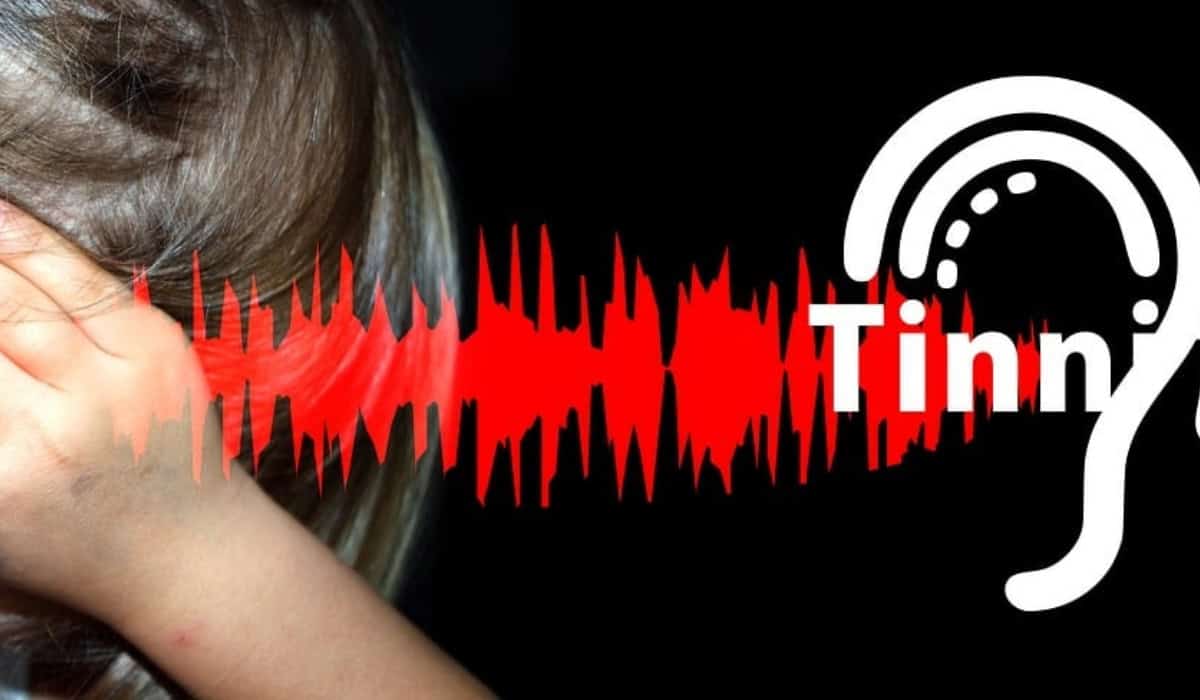The Latest Innovations and Future Directions
The landscape of tinnitus treatment is undergoing a remarkable transformation, fueled by advancements in clinical trials and breakthroughs in understanding the etiology of chronic tinnitus. As researchers delve deeper into tinnitus research, new treatment options are emerging, offering hope to those who suffer from this persistent condition. The interplay between technological innovations and insights into the neurological underpinnings of tinnitus promises to usher in a new era of effective interventions.
Central to this evolution is the expansion of clinical research, which now explores a broader spectrum of potential therapies, ranging from pharmacological solutions to auditory stimulation technologies. Unlike traditional approaches that mainly focused on symptom management, current strategies aim at addressing the root causes of tinnitus disorder, comparing favorably with the strides made in treating conditions like Parkinson’s disease. This shift signifies a proactive stance towards not just managing, but potentially curing, chronic tinnitus.
Among the promising avenues being explored are innovative devices that combine sound therapy with electrical stimulation, akin to the mechanistic approach employed in hearing aids but significantly more advanced. These devices are designed to retrain the brain, altering its response to the faulty signals believed to cause tinnitus. Such treatments underscore the importance of personalized medicine in managing tinnitus symptoms, moving away from a one-size-fits-all approach.
The quest for a cure is also being bolstered by a growing emphasis on identifying objective markers for tinnitus. This pursuit could revolutionize tinnitus treatment, making it possible to tailor interventions to the individual’s specific physiological and psychological profile. The parallels with treatment approaches for other neurological conditions, such as Parkinson’s disease, are evident, suggesting a promising trajectory for tinnitus treatment grounded in precision medicine.
As we stand on the cusp of these exciting developments, the future of tinnitus treatment looks bright. With ongoing clinical trials and a dedicated global research community, the day when tinnitus can be effectively cured is drawing nearer. The journey from research to reality is complex, yet the relentless pursuit of innovation and the tangible progress in tinnitus research instill confidence in the eventual conquest of chronic tinnitus.
A Deep Dive Into Tinnitus: Understanding the Condition
Tinnitus, often described as ringing in the ears, is a condition that affects millions worldwide. It’s a symptom rather than a disease itself, indicative of an underlying issue within the auditory system. Just as Parkinson’s disease affects neural pathways leading to motor and non-motor symptoms, tinnitus involves the complex interplay of neural signals gone awry. Understanding this condition is the first step towards demystifying the experiences of those affected.
Recent advancements in the field, such as deep brain stimulation, which has shown promise in treating Parkinson’s disease, offer insights into potential interventions for tinnitus. This technique’s success underscores the potential for neuromodulation strategies in managing tinnitus, highlighting the importance of targeting the neural basis of the condition. Such parallels between tinnitus and other neurological conditions pave the way for innovative treatment approaches.
The impact of tinnitus extends beyond the auditory symptoms, affecting individuals’ quality of life, much like Parkinson’s disease can alter life’s overall experience. This understanding has led to a more holistic approach to tinnitus management, recognizing the need for comprehensive treatment strategies that address both the physiological and psychological aspects of the condition.
The Science of Tinnitus: Etiology and Pathophysiology
The etiology of chronic tinnitus remains a complex puzzle, involving various factors that disrupt the normal functioning of the auditory system. In the United States alone, millions report experiencing tinnitus, with a significant number describing their condition as chronic. This prevalence underscores the necessity of understanding the intricate pathophysiology underlying tinnitus. Just as the auditory nerve plays a crucial role in transmitting sound signals, its dysfunction is closely linked to the manifestation of tinnitus symptoms.
At the core of chronic tinnitus is the maladaptive neuroplasticity within the auditory pathways, which leads to the brain misinterpreting the absence of external sound as the presence of noise. Self-reported tinnitus cases highlight the subjective nature of the condition, emphasizing the role of individual perception in the experience of tinnitus. This variability in experience complicates the development of universal treatment strategies, necessitating a personalized approach to management.
The exploration of tinnitus’s etiology and pathophysiology is vital for developing targeted interventions. Understanding how chronic tinnitus alters the auditory nerve’s function and the broader auditory system can unveil potential therapeutic targets. This knowledge is instrumental in moving beyond symptomatic treatment, offering hope for interventions that can significantly reduce, if not entirely eliminate, the burden of tinnitus.
The Current Landscape of Tinnitus Treatment
The treatment landscape for chronic tinnitus is diverse, encompassing a range of approaches designed to alleviate the condition’s symptoms. Among the treatments for tinnitus, cognitive behavioral therapy has emerged as a cornerstone, addressing the psychological impact of tinnitus and helping patients manage their perception of tinnitus symptoms. Similarly, hearing aids have been adapted to not only assist with hearing loss but also to provide sound therapy, potentially reducing the prominence of tinnitus sounds.
Technological advancements have led to the development of devices employing repetitive transcranial magnetic stimulation (rTMS) to target the auditory nerve directly, aiming to reset the neural circuits involved in tinnitus. These interventions have shown promising reductions in tinnitus severity, offering a glimpse into the potential for neuromodulation in tinnitus treatment. The efficacy of these treatments underscores the importance of a multifaceted approach, combining auditory stimulation with cognitive and behavioral strategies.
Despite these advances, the quest for an outright cure continues. The variability in tinnitus’s etiology, coupled with the subjective nature of self-reported tinnitus experiences, presents challenges in defining a one-size-fits-all treatment for tinnitus. However, the ongoing efforts in research and the development of new interventions provide a beacon of hope for those suffering from chronic tinnitus, signaling a future where the burdens of this condition can be significantly mitigated.
The Forefront of Tinnitus Research
At the forefront of tinnitus research, clinical trials are exploring novel interventions with the potential to revolutionize the treatment paradigm. These trials focus on identifying objective markers that can accurately quantify the burden of tinnitus, facilitating the development of targeted therapies. By understanding the relationship between tinnitus and auditory nerve dysfunction, researchers aim to unveil mechanisms that could lead to more effective treatments.
The pursuit of objective markers is particularly promising, as it leans on the premise that quantifiable aspects of tinnitus will enable the customization of treatment approaches. This shift towards personalized medicine mirrors broader trends in healthcare, emphasizing the importance of tailoring interventions to the individual’s specific needs. As research continues to unravel the complexities of self-reported tinnitus, the hope for a future where tinnitus can be effectively managed or even cured becomes increasingly tangible.
Innovations in Bimodal Stimulation for Tinnitus Relief
The exploration of bimodal stimulation represents a cutting-edge approach in tinnitus treatment, aiming to leverage the brain’s plasticity to diminish tinnitus symptoms. By simultaneously engaging the auditory system and somatosensory pathways, this method seeks to recalibrate the brain’s response to faulty signals that are perceived as tinnitus. Early findings suggest that this dual-stimulation strategy could offer a new avenue for relief, with the potential to significantly reduce the impact of chronic tinnitus.
The promise of bimodal stimulation lies in its ability to target the neural mechanisms underlying tinnitus, offering a non-invasive and potentially more natural pathway to symptom management. As research progresses, the refinement of these techniques could lead to bespoke treatments that cater to the unique auditory profiles of individuals with tinnitus, marking a significant step forward in the quest to alleviate the condition.
The Michigan Tinnitus Device: A New Hope
The Michigan Tinnitus Device emerges as a beacon of hope in the realm of treatments for tinnitus, signifying a novel approach to managing chronic tinnitus symptoms. This device embodies the principles of bimodal stimulation, combining auditory and somatosensory inputs to potentially retrain the brain’s response to tinnitus. By focusing on the auditory nerve’s role in tinnitus, the device aims to modulate the neural pathways associated with the condition, offering reductions in tinnitus perception for those affected.
Early clinical trials and patient testimonials suggest that the Michigan Tinnitus Device could lead to significant improvements in quality of life for individuals experiencing chronic tinnitus. The device’s approach aligns with cognitive behavioral strategies, emphasizing the importance of altering the perceptual and emotional aspects of tinnitus. This synergy between technological innovation and psychological support underscores a holistic approach to tinnitus treatment.
As research continues to evaluate the efficacy of this device, the potential for widespread adoption grows. The Michigan Tinnitus Device represents not just a treatment for tinnitus but a shift towards integrated, patient-centered care models that address both the physiological and psychological dimensions of chronic tinnitus. Such innovations highlight the progress being made in tinnitus research, fostering optimism for those seeking relief from this often debilitating condition.
Lenire: Bridging Technology and Therapy
Lenire, an innovative device designed to combat chronic tinnitus, represents a significant advancement in the intersection of technology and therapeutic intervention. By utilizing a dual approach that combines sound therapy via headphones with tactile stimulation through a tongue tip device, Lenire aims to promote neuroplastic changes within the brain. This bimodal stimulation has been shown to help reduce the severity of tinnitus symptoms, offering hope to those for whom traditional treatments have fallen short.
The device’s efficacy is underpinned by rigorous clinical trials, which demonstrate that consistent use of Lenire can lead to a meaningful reduction in tinnitus severity for a significant proportion of users. This outcome is achieved by the device’s ability to disrupt the typical tinnitus signal within the brain, fostering a new pattern of auditory processing that diminishes the perception of ringing or buzzing sounds.
Lenire’s ease of use, combined with its non-invasive nature, positions it as a frontrunner in tinnitus management. By bridging the gap between cutting-edge technology and proven therapeutic modalities, Lenire not only offers immediate relief but also contributes to the broader understanding and treatment of chronic tinnitus, paving the way for future innovations in the field.
The Promise of Hair Cell Regeneration
The advent of hair cell regeneration techniques marks a paradigm shift in treating hearing loss and associated conditions like tinnitus. At its core, this approach focuses on restoring damaged or lost hair cells within the cochlea, which are critical for converting sound waves into electrical signals the brain can interpret. Such innovations hold the potential to reverse hearing loss, thereby alleviating the symptoms of tinnitus for individuals who have previously relied on hearing aids for sound amplification.
While still in the early stages of research, hair cell regeneration presents a promising avenue for enduring solutions to auditory impairments. By targeting the biological root of hearing loss, this method aims to offer a more permanent solution compared to temporary relief provided by hearing aids. As research progresses, the hope is that hair cell regeneration will become a viable treatment option, significantly improving the quality of life for millions suffering from tinnitus and hearing loss.
FX-322: A Step Towards Hearing Restoration
FX-322, a pioneering drug in the fight against chronic tinnitus and hearing loss, is leading the charge towards hearing restoration. By targeting the regrowth of sensory hair cells in the inner ear, FX-322 has the potential to directly address the underlying causes of hearing loss. Early phase clinical trials have shown promising results, indicating that FX-322 can improve hearing clarity and, by extension, reduce the severity of tinnitus symptoms.
For individuals who have become reliant on hearing aids, FX-322 offers a glimmer of hope for a more definitive solution to their auditory challenges. Hearing aids amplify sounds to mitigate the effects of hearing loss but do not address the condition’s root cause. In contrast, FX-322 aims to repair the inner ear’s damaged cells, potentially restoring natural hearing and diminishing tinnitus without the need for external devices.
The development of FX-322 embodies the cutting-edge of auditory science, merging pharmaceutical innovation with a deep understanding of the biological mechanisms of hearing. As research advances, FX-322 stands as a testament to the potential for science to not only manage but cure chronic tinnitus and hearing loss, marking a significant leap forward in the quest for truly effective treatments.
Acoustic Neuromodulation: The AUREX-3 and Tinniwell Approach
Acoustic neuromodulation has emerged as a promising avenue for tinnitus therapy, focusing on altering the neural circuits associated with chronic tinnitus. The AUREX-3 approach leverages specific sound frequencies to disrupt the tinnitus sound perceived by the brain, aiming for a reduction in tinnitus symptoms. Clinical trials have shown that patients experience a significant decrease in the intensity of their tinnitus after several weeks of treatment, highlighting the potential of this method in managing chronic tinnitus.
Similarly, the Tinniwell device combines sound therapy with low-level laser therapy to provide a holistic treatment option. By targeting the inner ear directly, Tinniwell aims to reduce the symptoms of tinnitus, improving the quality of life for sufferers. Early feedback from users indicates a noticeable improvement after consistent use, underscoring the importance of innovative approaches in tinnitus therapy.
While both AUREX-3 and Tinniwell offer groundbreaking possibilities, ongoing research and clinical trials are crucial to fully understand their efficacy. As these technologies evolve, they may offer a beacon of hope for those suffering from tinnitus, proposing a future where this condition can be effectively managed or even alleviated.
Advanced Therapeutic Interventions
The realm of tinnitus treatment is witnessing a revolution with the advent of advanced therapeutic interventions. These interventions, ranging from novel pharmaceuticals to sophisticated neuromodulation techniques, are designed to target the underlying causes of tinnitus rather than just the symptoms. This shift towards addressing the root of the problem promises a new era of efficacy and relief for tinnitus sufferers.
As research delves deeper into the neural mechanisms of tinnitus, these advanced therapies are becoming increasingly precise. This precision not only enhances their effectiveness but also minimizes side effects, making the journey towards relief smoother for patients. The integration of technology and medicine in this field is creating a dynamic landscape where innovative solutions continue to emerge, offering hope to those affected by tinnitus.
Breakthroughs in Electrical and Magnetic Stimulation
Recent breakthroughs in electrical and magnetic stimulation have opened new avenues for tinnitus treatment. Techniques such as repetitive transcranial magnetic stimulation (rTMS) and electrical stimulation have shown promise in alleviating tinnitus symptoms. By targeting specific areas of the brain associated with auditory processing, these methods aim to reduce the severity of tinnitus, offering a non-invasive alternative to traditional treatments.
For many tinnitus sufferers, these therapies have been a game-changer, significantly improving their quality of life. The success of these treatments underscores the importance of continued innovation and research in the field, as scientists and clinicians work hand in hand to refine these techniques and explore their full potential in tinnitus management.
Repetitive Transcranial Magnetic Stimulation (rTMS)
Repetitive transcranial magnetic stimulation (rTMS) has emerged as a compelling intervention for individuals grappling with the severity of tinnitus. By utilizing magnetic fields to stimulate nerve cells in the brain, rTMS aims to reduce the neural hyperactivity associated with tinnitus. The efficacy of rTMS is influenced by factors such as stimulation frequency and stimulation intensity, which are tailored to each patient’s condition.
Despite the promise shown in early studies, the results of rTMS in treating tinnitus have yielded mixed results. This variability underscores the complex nature of tinnitus and the need for personalized treatment plans. Nonetheless, for some patients, rTMS has led to significant improvements, highlighting its potential role in a comprehensive tinnitus treatment strategy.
As understanding of the optimal stimulation parameters improves, the efficacy of rTMS is expected to increase. Continued research is essential to unlock the full potential of this technology, with the goal of offering a reliable and effective treatment option for the millions affected by tinnitus worldwide.
Extracochlear Multichannel Electrical Stimulation (EES)
Extracochlear Multichannel Electrical Stimulation (EES) represents a cutting-edge approach in the battle against tinnitus. This technique involves the application of electrical currents through multiple channels, aiming to modulate the auditory nerve and thus reduce tinnitus symptoms. EES is particularly promising for patients with chronic tinnitus, offering a novel way to address the condition at its neural roots.
The specificity of electrode placement and the precision in stimulation intensity are critical factors that enhance the effectiveness of EES. By carefully targeting the electrical stimulation, EES seeks to restore normal auditory processing functions, potentially leading to a significant reduction in tinnitus symptoms. Early clinical trials have shown encouraging results, suggesting that EES could become a cornerstone in the arsenal of treatments for tinnitus.
However, as with any emerging technology, further research is required to fully ascertain the long-term benefits and optimal treatment protocols for EES. The potential of this approach to offer a non-invasive, targeted treatment for tinnitus is immense, making it a focal point of current research efforts in the field.
Promontory and Round Window Stimulation Techniques
When exploring the landscape of innovative tinnitus treatments, promontory and round window stimulation techniques emerge as promising avenues. These stimulation techniques involve delivering electrical signals directly to specific areas within the ear, aiming to modulate the neural pathways involved in tinnitus symptoms. By targeting the promontory, a bony area near the cochlea, or the round window, a membrane separating the middle ear from the cochlea, these methods strive to provide relief by altering the aberrant neural activity that contributes to the perception of tinnitus.
One of the key advantages of these techniques is their targeted approach. Unlike broader electrical stimulation methods, promontory and round window stimulation can hone in on the areas most implicated in the generation of tinnitus symptoms. This precision not only enhances the potential efficacy of the treatment but also minimizes the risk of affecting other auditory functions. Patients undergoing these procedures often report a reduction in the intensity and bothersomeness of their tinnitus, highlighting the effectiveness of such targeted interventions.
Despite their promise, it’s essential to recognize that these techniques are still under research and not universally available. The success of promontory and round window stimulation varies among individuals, with factors such as the underlying cause of tinnitus and the patient’s overall auditory health playing pivotal roles in determining the outcome. As research progresses, these stimulation techniques may become more refined, offering hope for those seeking relief from persistent tinnitus symptoms.
Cochlear Implantation and Sound Therapy: Enhancing Auditory Pathways
When it comes to tinnitus treatment, cochlear implantation and sound therapy stand out as transformative approaches for those experiencing significant hearing loss alongside tinnitus symptoms. Cochlear implants work by bypassing damaged parts of the ear to directly stimulate the auditory nerve, offering a dual benefit: improving hearing abilities and, in many cases, reducing the perception of tinnitus. Sound therapy, on the other hand, utilizes external sounds to either mask tinnitus or help the brain shift focus away from it.
Hearing aids also play a crucial role in managing tinnitus, especially for individuals who have hearing loss as a primary contributing factor. These devices amplify external sounds, making it easier for the brain to prioritize these sounds over tinnitus. This auditory reinforcement can significantly diminish the impact of tinnitus on daily life, creating a more manageable condition for sufferers.
Together, cochlear implantation and sound therapy exemplify how enhancing auditory pathways can lead to substantial relief for people struggling with tinnitus symptoms. By addressing the underlying hearing loss and actively altering the brain’s focus, these treatments offer hope and improved quality of life for many. The integration of these advanced technologies with personalized care strategies is key to unlocking their full potential in tinnitus management.
Exploring Pharmaceutical and Non-Pharmaceutical Treatments
As research advances, the quest to find effective treatments for chronic tinnitus has expanded to include both pharmaceutical and non-pharmaceutical avenues. Pharmaceutical options aim to address the neurological aspects of tinnitus, potentially altering the brain’s chemistry to reduce symptoms. Non-pharmaceutical treatments, such as sound therapy and cognitive-behavioral therapy, focus on managing the condition’s psychological impact, offering tools for coping and habituation.
One of the most promising aspects of pharmaceutical research targets the neural circuits involved in tinnitus, such as the dorsal cochlear nucleus, where aberrant activity is believed to contribute to the condition. Meanwhile, non-pharmaceutical interventions emphasize the importance of brain plasticity, leveraging the brain’s ability to adapt and change in response to therapy, sound enrichment, and psychological support.
The comprehensive approach to tinnitus treatment acknowledges that chronic tinnitus is a multifaceted condition requiring a tailored combination of therapies. As understanding of tinnitus deepens, the development of targeted pharmaceutical treatments alongside innovative non-pharmaceutical strategies promises a future where individuals have access to a broader, more effective range of options for managing their condition.
The Potential of Pharmaceutical Therapy in Tinnitus Treatment
The exploration into pharmaceutical therapy for treating chronic tinnitus has opened new pathways for potentially mitigating this elusive condition. By focusing on the dorsal cochlear nucleus—a key area in the brain associated with auditory processing—scientists are unraveling how targeted medication can influence the neural mechanisms underlying tinnitus. This approach aims to reduce the hyperactivity within the auditory pathways that is thought to contribute to tinnitus perception.
While the journey towards finding an effective pharmaceutical solution is ongoing, early-stage clinical trials and research into neuropharmacology offer hope. These endeavors strive to pinpoint specific compounds that can alter the abnormal neuronal firing patterns associated with tinnitus, thereby providing relief for sufferers. The promise of these treatments lies not only in symptom management but also in the potential to address tinnitus at its source.
However, the pursuit of pharmaceutical interventions is accompanied by the challenge of ensuring that these treatments are both effective and have minimal side effects. The complexity of tinnitus, with its diverse etiology and individual variability, necessitates a cautious and thorough approach to drug development. As research progresses, the goal remains to unveil a pharmaceutical therapy that can significantly improve the quality of life for those with chronic tinnitus.
Cognitive Behavioral Therapy (CBT) and Eye-Movement Desensitization Reprocessing (EMDR): Psychological Interventions
For individuals grappling with chronic tinnitus, psychological interventions like Cognitive Behavioral Therapy (CBT) and Eye-Movement Desensitization Reprocessing (EMDR) offer valuable coping mechanisms. CBT focuses on changing negative thought patterns and behaviors associated with tinnitus, teaching sufferers to reframe their perception of the condition. This method has been instrumental in reducing distress and improving the overall quality of life for many.
EMDR, initially developed for trauma recovery, has also shown promise in tinnitus treatment. By processing distressing memories and reducing the emotional response to tinnitus, EMDR helps diminish its impact. This therapy involves guided eye movements while recalling tinnitus-related anxiety, aiming to desensitize individuals to their symptoms and promote emotional healing.
Both CBT and EMDR underscore the significance of addressing the psychological dimensions of chronic tinnitus. By empowering individuals with strategies to manage their reactions to tinnitus, these therapies contribute to a more holistic treatment approach. They highlight the importance of mental health support in conjunction with other treatment modalities, offering a beacon of hope for those seeking relief from the constant challenge of tinnitus.
Emerging Options and Future Directions
The landscape of tinnitus treatment is rapidly evolving, with clinical trials paving the way for promising new therapies. Innovations like vagus nerve stimulation, paired with sound therapy, are undergoing investigation for their potential to reduce tinnitus symptoms through neural plasticity. This approach reflects a growing emphasis on personalized stimulation techniques, tailored to the unique auditory profiles of patients with tinnitus.
Repetitive transcranial magnetic stimulation (rTMS) has also garnered attention for its efficacy in reducing chronic tinnitus. By targeting specific areas of the brain associated with auditory processing, rTMS aims to modulate the neural activity responsible for tinnitus. Preliminary studies suggest that with precise electrode placement and weeks of treatment, patients experienced significant relief, marking an exciting step forward in non-invasive tinnitus management.
As research continues, the integration of technology and personalized medicine holds the key to unlocking new avenues for tinnitus treatment. From advanced bimodal neuromodulation strategies to the exploration of genetic components, the focus is on developing targeted, effective therapies. These emerging options not only promise to enhance our understanding of tinnitus but also offer renewed hope for millions seeking relief from this pervasive condition.
Nerve Block and Bimodal Neuromodulation: The Next Frontier
The exploration of nerve block and bimodal neuromodulation represents a cutting-edge frontier in the quest to combat chronic tinnitus. Nerve block, involving the administration of local anesthetics to specific nerve groups, aims to provide temporary relief by interrupting the transmission of tinnitus signals to the brain. This approach offers a new angle on mitigating the relentless nature of tinnitus by directly targeting the peripheral nervous system’s role.
Bimodal neuromodulation, combining auditory and somatosensory stimulation, has shown promise in retraining the brain’s response to tinnitus. By simultaneously engaging these two sensory modalities, this innovative treatment seeks to disrupt the abnormal neural activity underlying tinnitus. Early clinical trials have revealed encouraging results, with many participants experiencing a significant reduction in tinnitus severity and distress.
The potential of these advanced therapies lies in their ability to address the complex neural networks involved in tinnitus. As research delves deeper into the mechanisms of action and optimal protocols for nerve block and bimodal neuromodulation, the hope is to unveil tailored, effective solutions for those enduring chronic tinnitus. This journey underscores the importance of ongoing innovation and the relentless pursuit of knowledge in the battle against tinnitus.
Unpacking Genetic Components of Tinnitus for Targeted Therapy
The investigation into the genetic components of tinnitus is unlocking new possibilities for targeted therapy, especially for individuals suffering from severe tinnitus. By understanding the genetic predispositions that contribute to the vulnerability and manifestation of tinnitus, researchers are paving the way for precision medicine approaches tailored to an individual’s genetic makeup. This leap forward could revolutionize the way tinnitus is treated, moving from a one-size-fits-all strategy to one that is highly personalized.
Identifying specific genetic markers associated with tinnitus disorder not only aids in the development of targeted therapies but also enhances screening and prevention strategies. For those with a family history of tinnitus or identified genetic risk factors, early intervention could potentially mitigate the severity or even prevent the onset of tinnitus. This proactive approach signifies a shift towards more preventative measures in managing auditory health.
As the field of genomics advances, the integration of genetic insights into tinnitus treatment protocols offers a beacon of hope for those affected by severe tinnitus. The prospect of therapies that are specifically designed based on genetic information heralds a new era in tinnitus management, emphasizing the importance of continued research and innovation in uncovering the genetic underpinnings of this complex condition.
Overcoming Tinnitus: From Research to Reality
Translating tinnitus research into effective treatments bridges the gap between theory and practical relief, making the journey from laboratory to patient both exciting and complex. Objective markers play a crucial role in this transition, allowing researchers to quantifiably measure how tinnitus impacts individuals, thus tailoring treatments more effectively. Understanding the burden of tinnitus on patients’ lives pushes scientists to develop interventions that not only mitigate symptoms but also address the condition’s root causes.
The relationship between tinnitus and auditory health is intricate, with each case of tinnitus presenting unique challenges. This complexity necessitates a multifaceted approach to treatment, combining current knowledge with innovative therapies. As researchers delve deeper into the etiology and pathophysiology of tinnitus, the potential for groundbreaking treatments becomes more apparent, promising a future where tinnitus can be managed more effectively or even cured.
The transition from research to reality is not without its hurdles. It requires robust clinical trials, regulatory approvals, and ultimately, the integration of new treatments into clinical practice. Yet, the progress in understanding and treating tinnitus offers hope. By continuing to support and prioritize tinnitus research, the leap from innovative concepts to life-changing treatments becomes increasingly achievable, marking a significant stride towards overcoming the challenges posed by this condition.
The Journey Towards a Cure: Can Tinnitus Be Eliminated?
The quest to eliminate chronic tinnitus is a focal point of many labs worldwide, aiming to transform the dream of a cure into a tangible reality. Chronic tinnitus, characterized by persistent ringing or noise in the ears, presents a complex challenge to researchers due to its multifactorial nature. However, the relentless pursuit of a cure is fueled by a deeper understanding of its underlying mechanisms, paving the way for potential eradication strategies.
Current research explores a variety of avenues, from neuromodulation techniques to pharmacological interventions, each offering a glimpse into a future without tinnitus. Labs are not only focusing on treating symptoms but also on restoring normal auditory function, which could potentially reverse tinnitus at its source. This holistic approach underscores the commitment to not just managing but ultimately curing tinnitus.
The journey towards eradicating tinnitus is paved with both promise and challenges. While significant strides have been made, the complexity of tinnitus means that a singular cure might not be applicable to all. Therefore, the focus remains on personalized treatment strategies that can adapt to the unique needs of each individual. As research continues to advance, the possibility of a world without tinnitus becomes more plausible, offering hope to millions affected by this condition.
Navigating the Future: The Importance of Continued Research and Innovation
Tinnitus research is at a pivotal juncture, with treatment options expanding as understanding of chronic tinnitus deepens. Yet, the journey is far from over. Clinical research remains crucial, exploring new frontiers such as the potential link between tinnitus disorder and neurodegenerative diseases like Parkinson’s disease. This underscores the importance of a multidisciplinary approach, integrating insights from various fields to unlock novel treatment pathways.
Innovation in tinnitus treatment also extends to technology, with devices such as hearing aids being adapted to not just amplify sound but to alleviate tinnitus symptoms. The exploration of such technologies represents a crucial step towards developing comprehensive treatment options that address both the auditory and perceptual aspects of tinnitus.
The future of tinnitus management hinges on a sustained commitment to research and innovation. As we deepen our understanding of the disorder, the development of targeted therapies becomes increasingly feasible. This progress not only promises to expand the arsenal of treatment options but also improves the quality of life for individuals living with chronic tinnitus. Therefore, continued investment in tinnitus research is essential, paving the way for groundbreaking advancements that could redefine the landscape of tinnitus treatment.
Final Thoughts on the Quest for Tinnitus Relief
As patients treated for tinnitus continue to navigate their journey towards relief, the importance of a comprehensive approach becomes clear. Therapies for tinnitus are evolving, driven by an increased understanding of the cochlear nerve’s role in the condition. This evolution in treatment signifies a move towards more targeted, effective strategies that promise not just symptom management but a potential decrease in tinnitus perception.
The quest for tinnitus relief is supported by a dynamic field of research and clinical practice, where new therapies are continually being tested and developed. From sound therapy to advanced neurostimulation techniques, the range of available treatments reflects the diverse nature of tinnitus and the auditory system’s complexity. This diversity ensures that patients have access to personalized treatment plans tailored to their specific needs and symptoms.
Ultimately, the journey towards effective tinnitus management is marked by both hope and challenges. The promise of cutting-edge research fuels optimism for future breakthroughs, while the complexities of the condition remind us of the hurdles still to be overcome. However, with ongoing advancements in treatment and a deeper understanding of tinnitus, the path towards relief becomes more navigable, offering hope to those affected by this persistent condition.
The Road Ahead: Hope, Challenges, and the Promise of Cutting-Edge Research
Tinnitus management has entered a new era, marked by the potential for FDA approval of innovative treatments within the next 12 weeks. This milestone is a testament to the progress made in understanding and treating tinnitus, offering new hope to those affected. Yet, the path forward is not without challenges. The intricacies of tinnitus, coupled with the need for personalized treatments, underscore the importance of continued innovation and research.
The impact of tinnitus on mental health cannot be overstated, necessitating treatments that address both the physical and psychological facets of the condition. The development of comprehensive programs that include behavioral therapies alongside medical interventions represents a holistic approach to tinnitus management. Moreover, advancements in areas such as neck surgery reveal the interconnectedness of auditory health with other bodily systems, further expanding the scope of potential treatments.
As we look to the future, the role of cutting-edge research in overcoming tinnitus becomes increasingly clear. The dedication of researchers and clinicians to exploring new treatments and technologies offers a beacon of hope to millions. By embracing the challenges and leveraging the promise of innovation, the journey towards effective tinnitus relief continues, driven by the goal of improving the lives of those affected by this complex condition.







